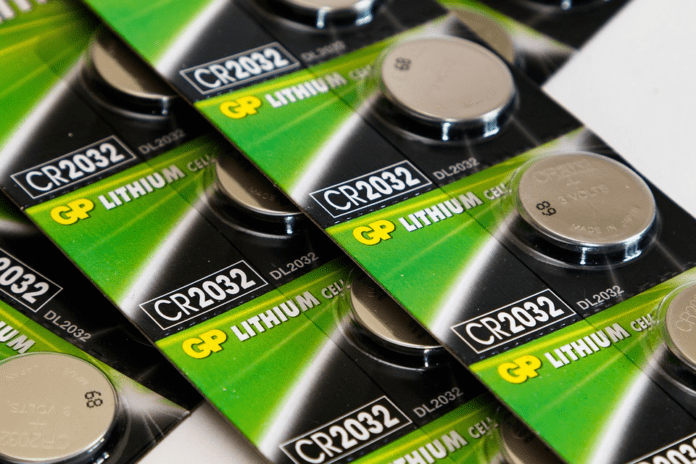There are many different types of energy storage devices on the market, each with its own unique set of characteristics. Some are better for storing large amounts of energy for long periods, while others are more suited for quick bursts of power.
Here is a list of seven different types of energy storage devices, along with a brief description of each one’s strengths and weaknesses.
Lithium-ion batteries
Lithium-ion batteries are one of the most popular types of energy storage devices due to their high energy density and long life span. They are usually used in portable electronic devices, such as laptops and cell phones, and are also increasingly being used in electric vehicles and energy storage systems. However, they are also one of the most expensive types of batteries and can be hazardous if not handled properly.
There are also environmental issues associated with the mining of lithium, which is a key ingredient in these batteries. They are also not well-suited for very cold temperatures.
On the other hand, other batteries like lead-acid batteries can be recycled and are less expensive, but they have a lower energy density and shorter life span.
Supercapacitors
A supercapacitor is a type of small energy storage device that can charge and discharge very quickly. They have a much higher power density than batteries, but a lower energy density.
This means that they can store less total energy than batteries, but can release it much faster. Supercapacitors are often used in applications where quick bursts of power are needed, such as in hybrid and electric vehicles. They are also used in some portable electronic devices, such as digital cameras.
If you need an energy storage device that can charge and discharge quickly, a supercapacitor might be a good option. However, they are not well-suited for applications where a large amount of energy is needed.
Flywheels
Flywheels are a type of energy storage device that uses the kinetic energy of a rotating mass to store energy. When the flywheel is spinning, it stores energy in the form of kinetic energy. When power is needed, the flywheel can be used to generate electricity by using its kinetic energy to drive an electric generator.
Flywheels are often used in applications where quick bursts of power are needed, such as in hybrid and electric vehicles. They can also be used to smooth out fluctuations in power from renewable energy sources, such as wind and solar.
Therefore, these devices are a good option for applications that need quick bursts of power. However, they are not well-suited for long-term energy storage.
Pumped hydro
Pumped hydro is a type of energy storage that uses pumps to move water from a lower elevation to a higher elevation. When power is needed, the water is released from the higher elevation and flows through a turbine, generating electricity. Pumped hydro systems are often used to store large amounts of energy for long periods, making them a good option for grid-scale energy storage.
Pumped hydro is one of the most common types of energy storage, due to its high efficiency and low cost. However, it requires a large amount of space and is not well-suited for portable applications.
Additionally, environmental concerns have been raised about the impact of pumped hydro on local ecosystems.
Compressed air energy storage
Compressed air energy storage (CAES) is a type of energy storage that uses compressed air to store energy. When power is needed, the compressed air is released and used to drive an electric generator. CAES systems are often used to store large amounts of energy for long periods, making them a good option for grid-scale energy storage.
CAES is a very efficient way to store energy, but it requires a high-pressure environment, which can be dangerous. Additionally, CAES systems are very expensive to build and require a lot of space. They are also not well-suited for portable applications.
However, if you need an energy storage device that can store large amounts of energy for long periods, CAES might be a good option.
Thermal energy storage
On the other hand, thermal energy storage (TES) is a type of energy storage that uses heat or cold to store energy. When power is needed, the stored heat or cold is used to generate electricity. This works by using the heat or cold to drive a heat engine, which then drives an electric generator. TES is a very efficient way to store energy, but it requires special equipment to store and use the
These systems are often used to store large amounts of energy for long periods, making them also a good option for grid-scale energy storage. Some engineers would say TES is the best way to store grid-scale energy, but the infrastructure for TES is not well developed yet.
It needs more development in the area of heat exchangers, thermal energy carriers, and thermal storage media.
Chemical storage
Finally, chemical storage is a type of energy storage that uses chemical reactions to store and release energy. When power is needed, the stored chemical energy is converted into electricity.
Chemical storage is a very efficient way to store energy, but it requires special equipment to store and use the stored chemical energy. This type of equipment is often expensive and can be dangerous to handle. Additionally, some chemical storage devices are not well-suited for long-term energy storage because the stored chemicals can degrade over time.
Types of chemicals used in chemical storage include alkaline, direct methanol, molten carbonate, phosphoric acid, redox, and solid oxide fuel cells.
Which energy storage device you choose will depend on your specific needs. Each type of energy storage has its own unique set of strengths and weaknesses, so it’s important to choose the one that is best suited for your particular application.
The supercapacitors are good for quick bursts of power while the batteries are better for long-term energy storage. If you need an energy storage device that can store large amounts of energy for long periods, you might want to consider a pumped hydro system or a compressed air energy storage system. And if you need an energy storage device that is very efficient, you might want to consider a thermal energy storage system.
Whatever your needs, there is an energy storage device that can meet them.
















